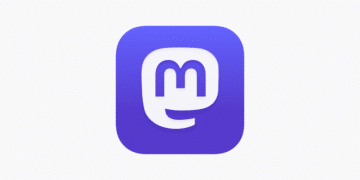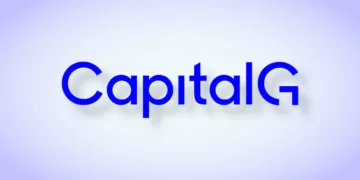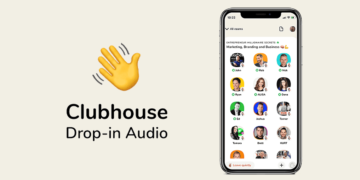In a major leap forward for generative AI, OpenAI has officially launched GPT‑5, its most advanced language model to date. This release marks a turning point in how users interact with AI assistants—transforming ChatGPT from a conversational novelty into a smart, context-aware collaborator.
With enhanced reasoning, persistent memory, seamless tool use, and dramatically fewer hallucinations, GPT‑5 is poised to redefine how individuals and enterprises use AI in daily work and decision-making.
What Makes GPT‑5 Different?
Unlike its predecessor, GPT‑4, the new GPT‑5 model is not just smarter—it’s practically helpful. Users describe it as “a PhD‑level assistant in your pocket.” OpenAI’s updates include:
-
Advanced memory that persists across chats and sessions
-
Superior reasoning for complex, multi-step queries
-
Tool integration with Google Workspace, Microsoft 365, Python, and web browsers
-
Sharper creativity and coding capabilities
-
Massively reduced hallucinations
If GPT‑4 was the warm-up, GPT‑5 is the real beginning of productivity-grade AI.
How GPT‑5 Feels in Use
Early adopters report a shift in experience—one that feels closer to working with a human assistant than a bot.
“It remembers what we talked about last week. It finishes things without me repeating myself,” says Rina Kapoor, CTO at a SaaS startup using GPT‑5 for internal documentation and sales content.
The model’s memory allows for true personalisation. You can reference previous projects, correct its tone or approach, and it will carry that learning forward.
GPT‑5 + Tools = Action
GPT‑5 is more than a chat interface. Its ability to use tools makes it functionally closer to an AI employee. OpenAI demos showcased how the model could:
-
Navigate emails, sort priorities, and draft replies
-
Manage your calendar with context
-
Summarise recent documents, PDFs, and meeting notes
-
Generate Python code and debug scripts
With APIs and integrations, GPT‑5 is set to power a new wave of internal copilots, intelligent dashboards, and automation layers inside everyday apps.
Reliability Up, Hallucinations Down
A consistent complaint with large language models has been factual inaccuracy. GPT‑5 addresses this head-on.
-
Hallucinations reduced by over 30% in professional domains
-
Improved logical reasoning in law, consulting, and academia
-
Sharper focus in long documents and summarisation tasks
This means less editing, better trust, and more effective delegation to AI—especially in high-stakes workflows.
Enterprise-Ready and Ecosystem-Built
OpenAI isn’t just releasing a better model—it’s rolling out an ecosystem. GPT‑5 is now available for:
-
ChatGPT Pro users
-
Teams & Enterprise tiers, with admin controls
-
Custom GPT builders, including API access, tools, and memory hooks
Businesses can deploy branded assistants, integrate GPT‑5 into CRMs, or build automated workflows using OpenAI’s infrastructure.
It’s the early foundation of an AI operating system—inside tools, across departments, and adaptable to each company’s context.
GPT‑5 Isn’t AGI—But It’s Close
OpenAI is clear that GPT‑5 is not artificial general intelligence. Yet it mimics many characteristics:
-
Adapts across domains
-
Remembers tasks over time
-
Uses external tools to solve unfamiliar problems
CEO Sam Altman noted:
“GPT‑5 isn’t AGI, but it’s the most general-purpose collaborator we’ve built. It helps most people with most things—and that’s a powerful milestone.”
Real-World Use Cases Already Taking Off
Companies are embedding GPT‑5 into:
-
Customer support: Handling 90% of Tier-1 requests
-
Legal: Case summarisation, contract analysis
-
Marketing: Ad copy, social posts, A/B testing automation
-
Healthcare: Clinical summaries, history interpretation
-
Education: Personalised tutoring with memory-based guidance
AI isn’t replacing workers it’s becoming their cognitive twin.
The Competitive Landscape
OpenAI isn’t alone. Google DeepMind’s Genie 3 world model, Anthropic’s Claude, Meta’s LLM tools, and open-source LLMs like Mistral are all evolving rapidly.
Yet OpenAI maintains a strong lead through accessibility, developer friendliness, and tight integration with common tools. GPT‑5 raises the bar—and changes the game.
What’s Next for GPT‑5?
Coming soon:
-
Multimodal support with vision, voice, and real-world context
-
Deeper workspace integrations via APIs and agents
-
Improved local models like
gpt-oss—an open-source reasoning model from OpenAI for on-device use -
Custom AI agents with persistent memory, style, and goals
GPT‑5 isn’t just smarter—it’s modular, composable, and getting more personal.
Final Thoughts
GPT‑5 isn’t just another version—it’s a foundational shift.
It remembers. It reasons. It acts. It’s not perfect, but it’s practical. Whether you’re a startup, freelancer, or global enterprise, GPT‑5 is no longer a tool you experiment with—it’s a partner you build with.
As we look toward a future of AI collaboration, GPT‑5 might just be the model that future historians cite as the beginning of something truly transformative.



















